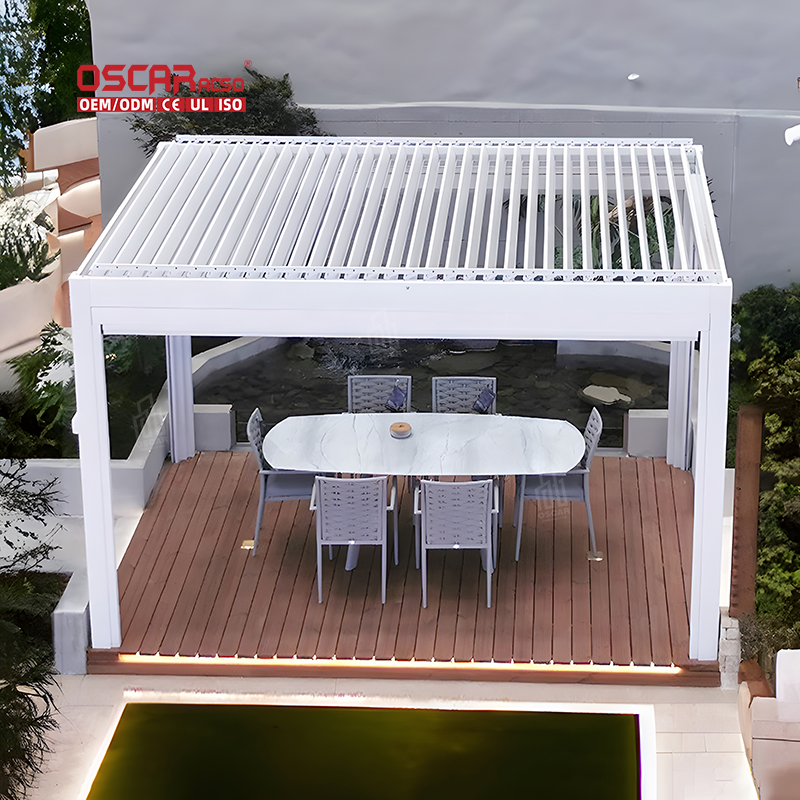Pergola Distance from Fence, Unlock Your Dream Outdoor Space
Ever wondered exactly how far your beautiful new pergola needs to be from your fence? 🤔 This is a crucial question for a...
.jpg)
Ever wondered exactly how far your beautiful new pergola needs to be from your fence? 🤔 This is a crucial question for any homeowner looking to enhance their outdoor living area. The truth is, there isn’t a single universal answer, but understanding the key factors will ensure your project is a success and keeps you on the right side of local regulations.
Why Distance Matters More Than You Think
Getting the spacing right between your pergola and fence isn’t just about following rules—it’s about smart planning and being a considerate neighbor. Proper distance can:
- •
Prevent future disputes with neighbors over property lines or shading.

- •
Ensure adequate airflow and sunlight for both your space and your neighbor’s yard.

- •
Provide necessary access for future maintenance or repairs for both structures.
- •
Meet local building codes and avoid potential fines or being asked to take it down.
🗺️ Key Factors Influencing Required Distance
Several important elements will determine how close you can build to your fence:
- •
Local Zoning Laws & Building Codes: This is the most critical factor. Regulations vary significantly by city, county, and even homeowners’ associations (HOAs). They often specify minimum setback distances from property lines for permanent structures.
- •
Type of Pergola: Is your pergola attached to your house or a freestanding structure? Attached pergolas might have different setback requirements compared to freestanding ones.
- •
Pergola Size: In some regions, larger pergolas (e.g., over 20 m²) often face stricter rules and may require a formal building permit, which will explicitly address setbacks.
.jpg)
- •
Your Neighbor’s Rights: Laws often protect a neighbor’s right to light and air. Building too close to the boundary might negatively impact them, potentially leading to conflicts.
🔍 How to Find Your Specific Requirements
So, how do you get the exact answer for your home? Here’s your action plan:
- 1.
Contact Your Local Building Department: This is your first and most important step. They can provide the exact setback requirements and inform you if you need a permit for your project.
- 2.
Review Your Property Survey: Always know your exact property lines. Building on or too close to your neighbor’s land is a serious issue.
- 3.
Check Your HOA Rules: If you live in a community with a Homeowners’ Association, they will likely have their own architectural guidelines covering structure placement.
- 4.
Talk to Your Neighbors: It’s always a good practice to discuss your plans with adjacent neighbors. This maintains good relations and can prevent misunderstandings later.

✨ Pro Tips for a Smooth Installation
Beyond the rules, consider these practical tips for optimal placement:
- •
Aim for at least 3-5 feet between your pergola and the fence as a general rule of thumb for maintenance access and airflow, but always defer to local code.
- •
Think about function. If you plan to have seating under the pergola, ensure the distance from the fence allows for comfortable furniture placement and movement around it.
- •
Consider the sun’s path. Position your pergola to maximize or minimize shade based on how you intend to use the space.
- •
When in doubt, err on the side of a larger setback. It provides more flexibility and often looks more balanced in the yard.
In my view, while navigating regulations might seem tedious, viewing it as a necessary step for a worry-free project is key. A well-placed pergola, respecting all rules and your neighbors, doesn’t just add value to your property—it significantly enhances your quality of life by creating a harmonious and enjoyable outdoor retreat. 🏡

